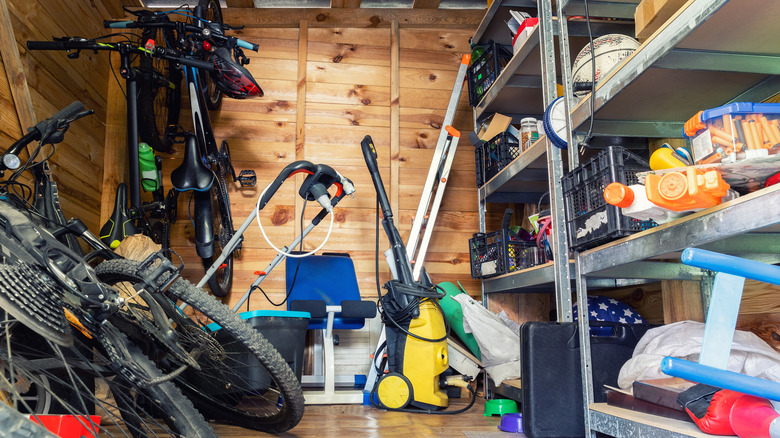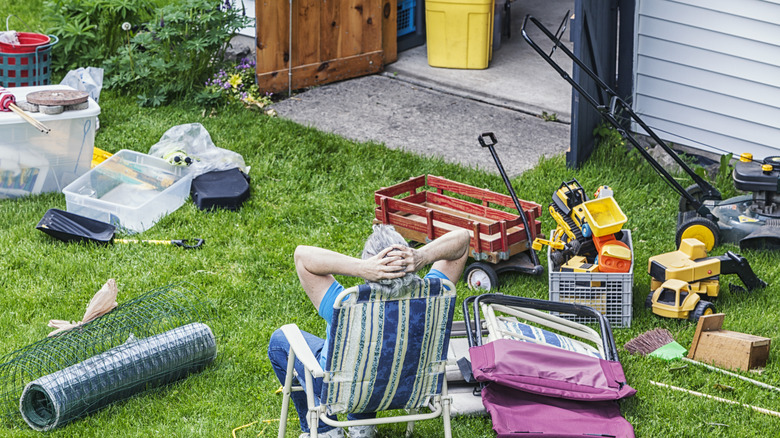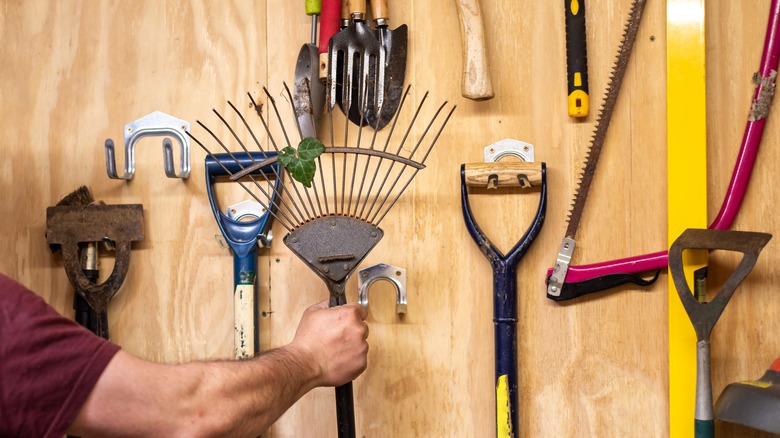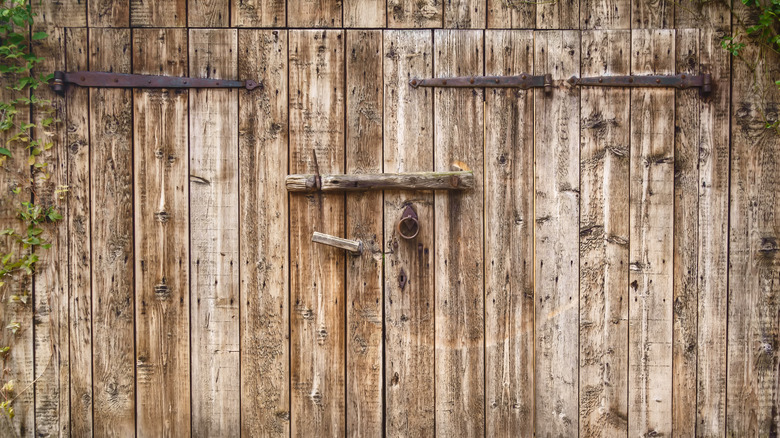The Biggest Mistakes To Avoid When Cleaning Your Storage Shed
Storage sheds can be a godsend used to store off-season machinery and gardening tools. However, they can also easily become a hidden spot to collect unused items and quickly build up clutter. More importantly, cluttered sheds can mask structural problems. Though it's not exactly a fun task, with a good strategy, you can avoid common mistakes when cleaning a storage shed.
Spring cleaning your home can extend beyond indoors, and it's common to clear out a storage shed in the spring when it's warmer and more comfortable to take on outdoor tasks. Another good reason is that it is an ideal time to take stock of what you have and what you will need for the summer, while also putting away winter machinery like snow shovels, snow blowers, and other winter accessories. Of course, you can clean out your shed at any time of year, and if you stay organized and keep a positive mind frame, you can get it done with less effort and stress than you may think. It also helps to enlist family members or friends to tackle the shed together. The more hands the better, especially when dealing with heavy lifting. But no matter how or when you do it, make sure to avoid these frustrating mistakes.
Moving items around instead of doing a full cleanout
The first thing you should do may not be exactly what you want to do, but it is the basic premise for a clean shed. Take everything out of your shed and place all items out in the open in the yard. With your belongings out in plain view, go through the pile systematically and figure out what you want to keep and what needs to go. Sort by type, such as tools, sports equipment, gardening tools, etc., and tackle each category.
Keeping what you don't need is another mistake, as excess clutter can steal valuable space. Make individual stations for items to keep, donate, sell, or throw away. When deciding whether to keep an item, ask yourself whether the item is either necessary, brings joy, or has sentimental value. If not, let it go. Be realistic, because if you haven't used it in years, you likely won't. Also, consider whether the shed is the best place for the item and if it should be housed in a basement or attic instead.
Not doing a deep clean
Once the shed is empty it would be a disservice to not do a thorough cleaning. Remove the dust and dirt that has accumulated since you last cleaned it. Start by sweeping and removing cobwebs. To clean walls and shelves, you can use a vinegar and water solution, which also helps remove mold. Then clean the windows and doors. Wipe them down to remove dirt, grime, and dead insects. Likewise, make sure to also wipe down any dirty machinery and tools before you put them back in the shed. It's also a good time to get painting if necessary, since deep cleaning is one thing you need to do before painting your shed.
You'll also want to clean around the outside of the shed since that can impact what falls on your shed and surrounding debris. Clear away branches, fallen leaves, and any other bulky items that have accumulated around the shed. You can use a rake, broom, or leaf blower. Then tackle weeds and overgrown vegetation, you canuse a weed wacker or pull them out manually. Finally, use a broom or leaf blower to remove smaller debris like dirt, leaves, and dust. You can also hose down the area to leave it spotless.
Placing items back aimlessly
With the shed empty, think about whether your existing setup is working. Not utilizing walls for storage is another mistake. Consider if shelves and hooks are in the right place or if they can benefit from being moved around. This is also the time to boost your storage options and add more if necessary to keep your belongings elevated and easy to reach. If you've accumulated more items over the year, as most of us do, you may need more of these organizational items.
If you keep covered bins in your shed, label them so you know what is in them just by looking at them and without having to open them. Group similar items together so finding what you need will be easy and efficient. You'll also want to make sure to leave a clear path to easily get what you need once items are put back. Keep items that are used often up front.
Skipping pest prevention
This is the time to inspect your shed thoroughly to see if pests have been getting into it. Look for cracks, gaps, or holes around doors, windows, vents, and the foundation. Even tiny openings can be entry points for rodents, so seal all nooks and crannies: Use caulk, steel wool, or metal mesh. Pay close attention to areas where pipes or wires enter the shed. Then reinforce doors and windows, ensuring that they close tightly and latch securely. Check doors, handles, and hinges and make sure they are in good shape. Consider adding weatherstripping for extra protection.
You'll also want to eliminate anything that attracts pests in the shed. Never store food, pet food, or birdseed in your shed, as these are major draws for rodents, other animals, and insects. To keep creatures away, clean the shed regularly and sweep up crumbs, spills, and debris. Finally, consider using natural repellents. Place peppermint oil-soaked cotton balls around the shed to ward off any uninvited guests.




